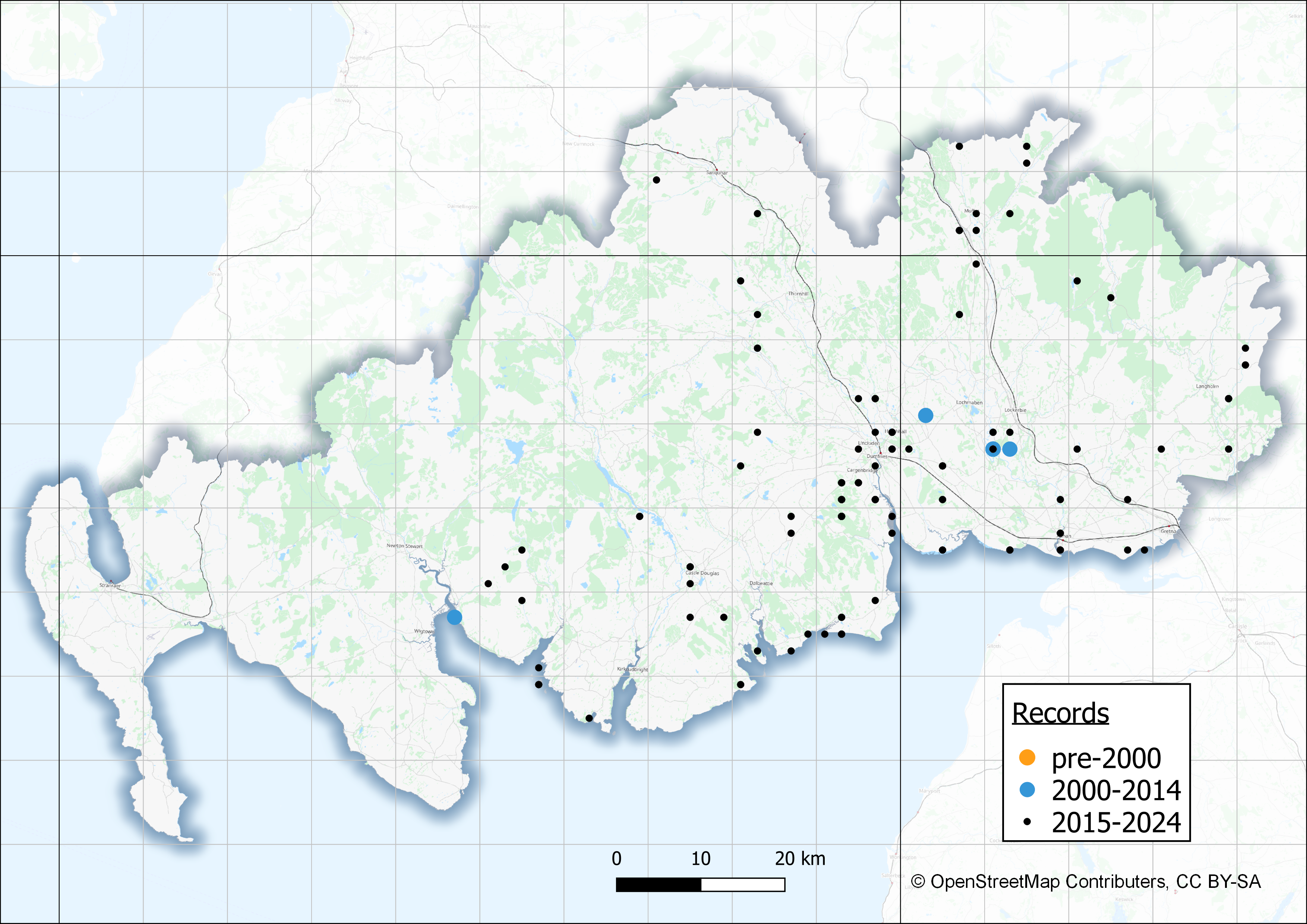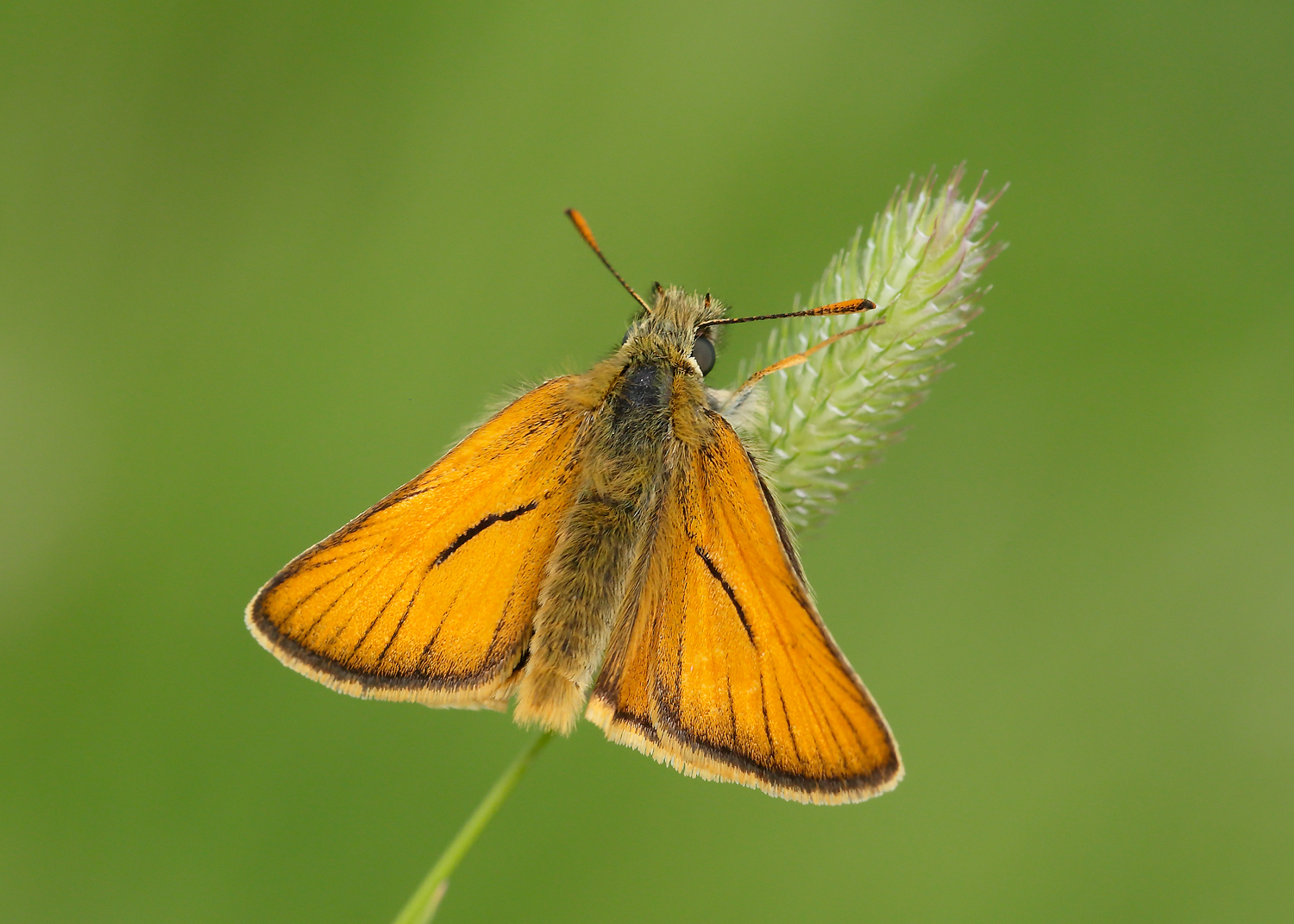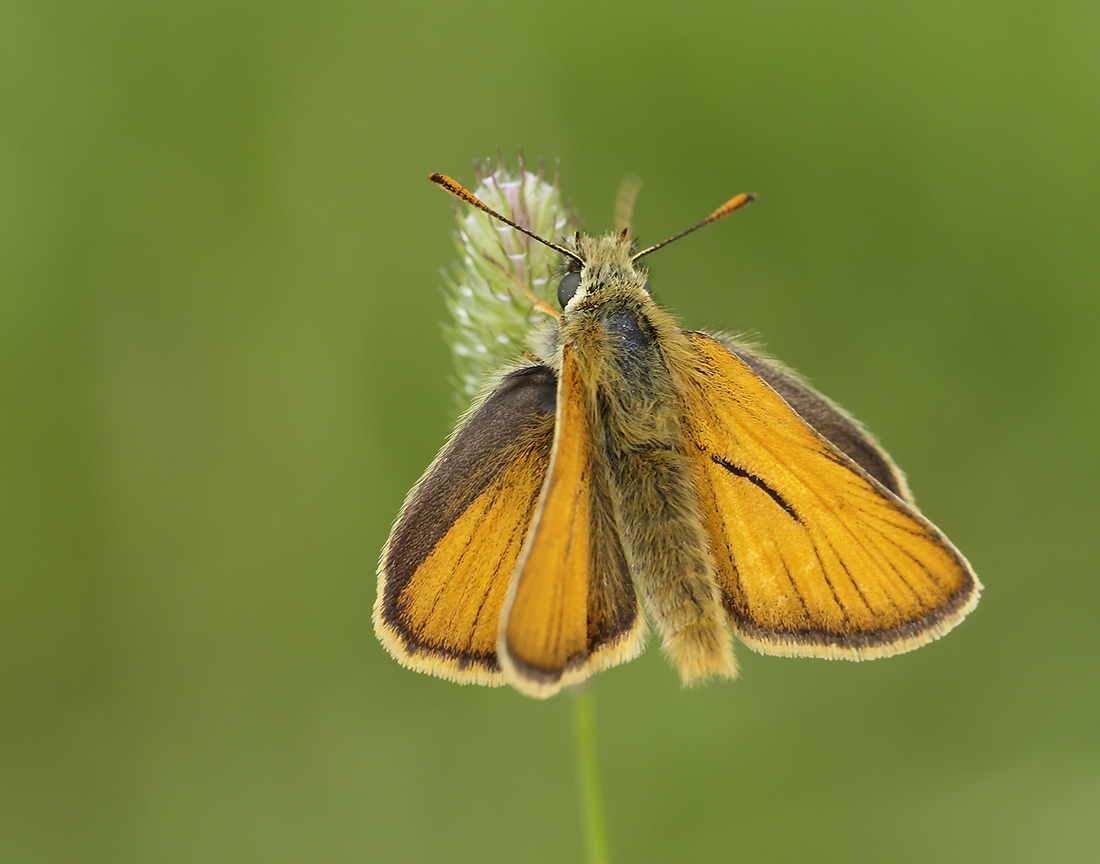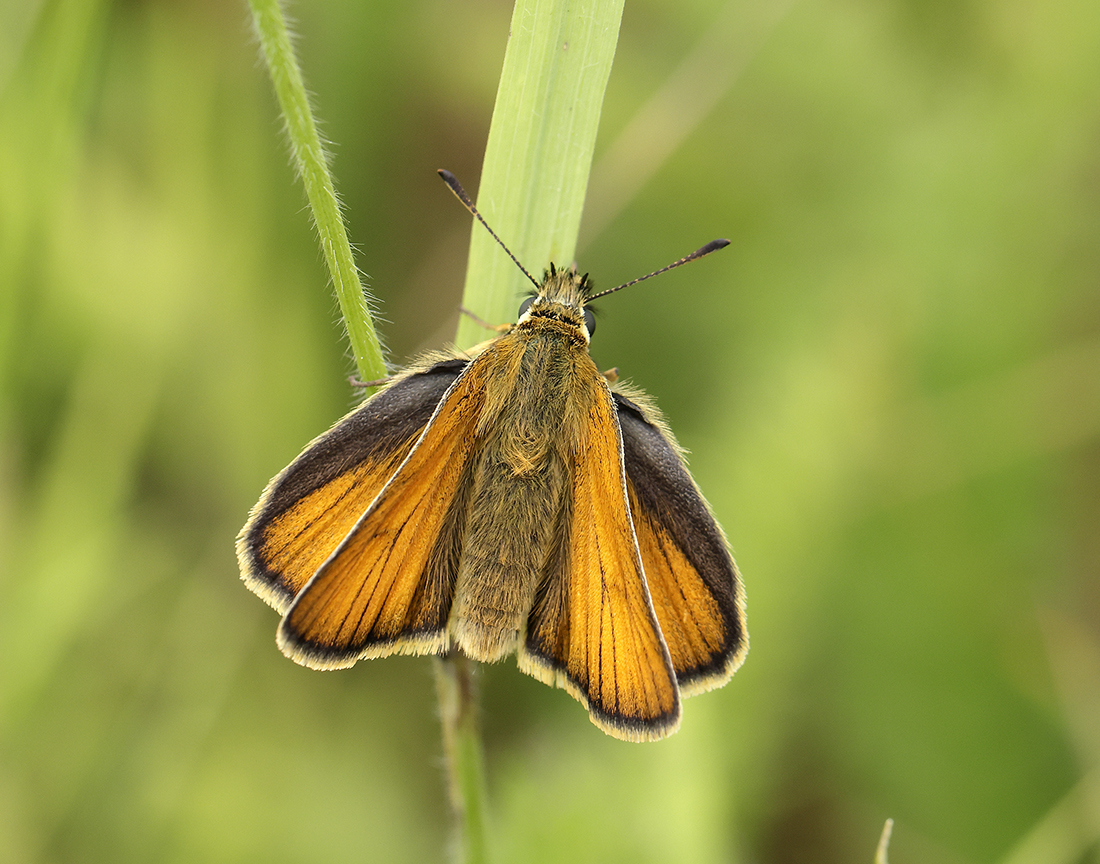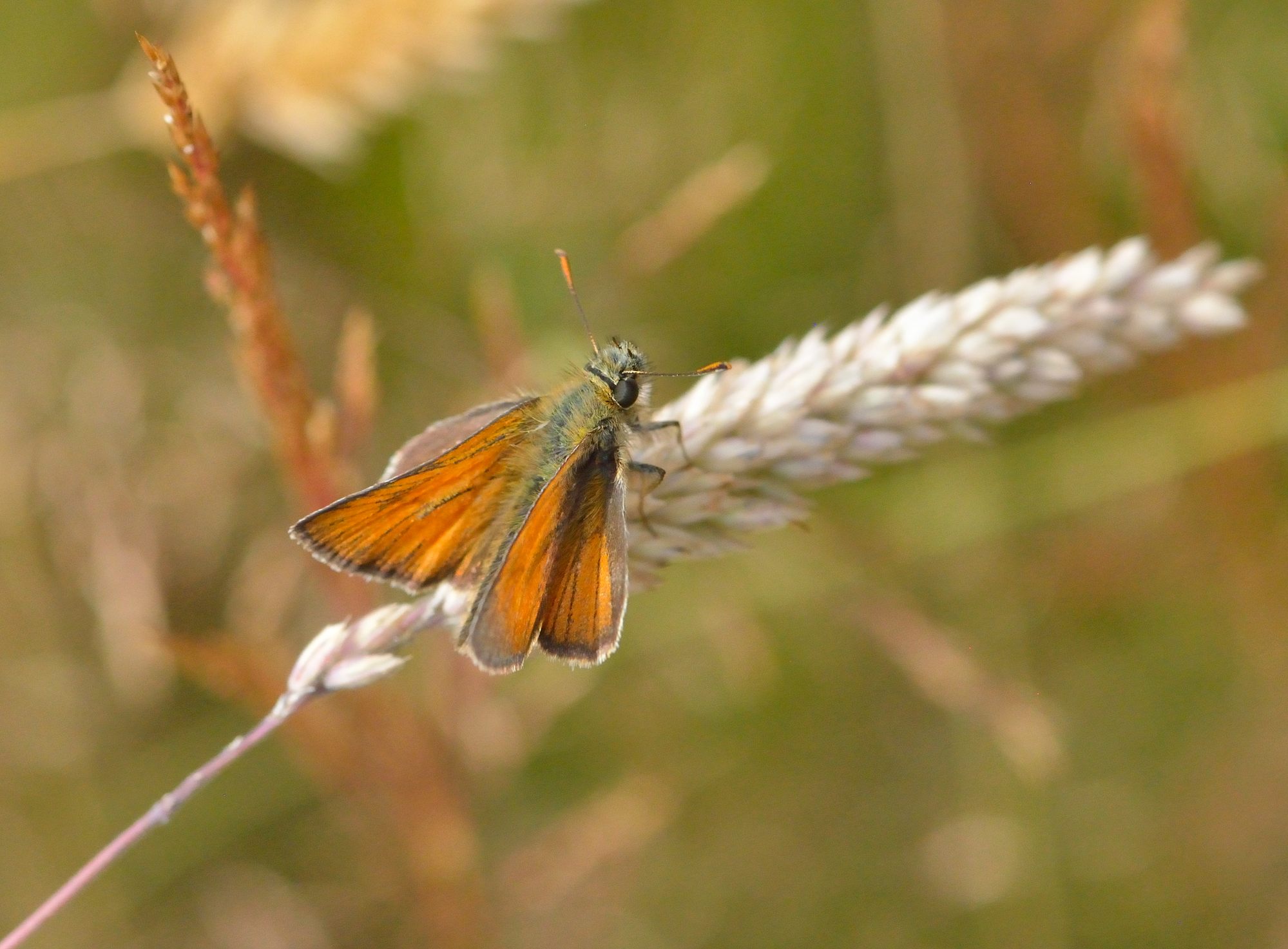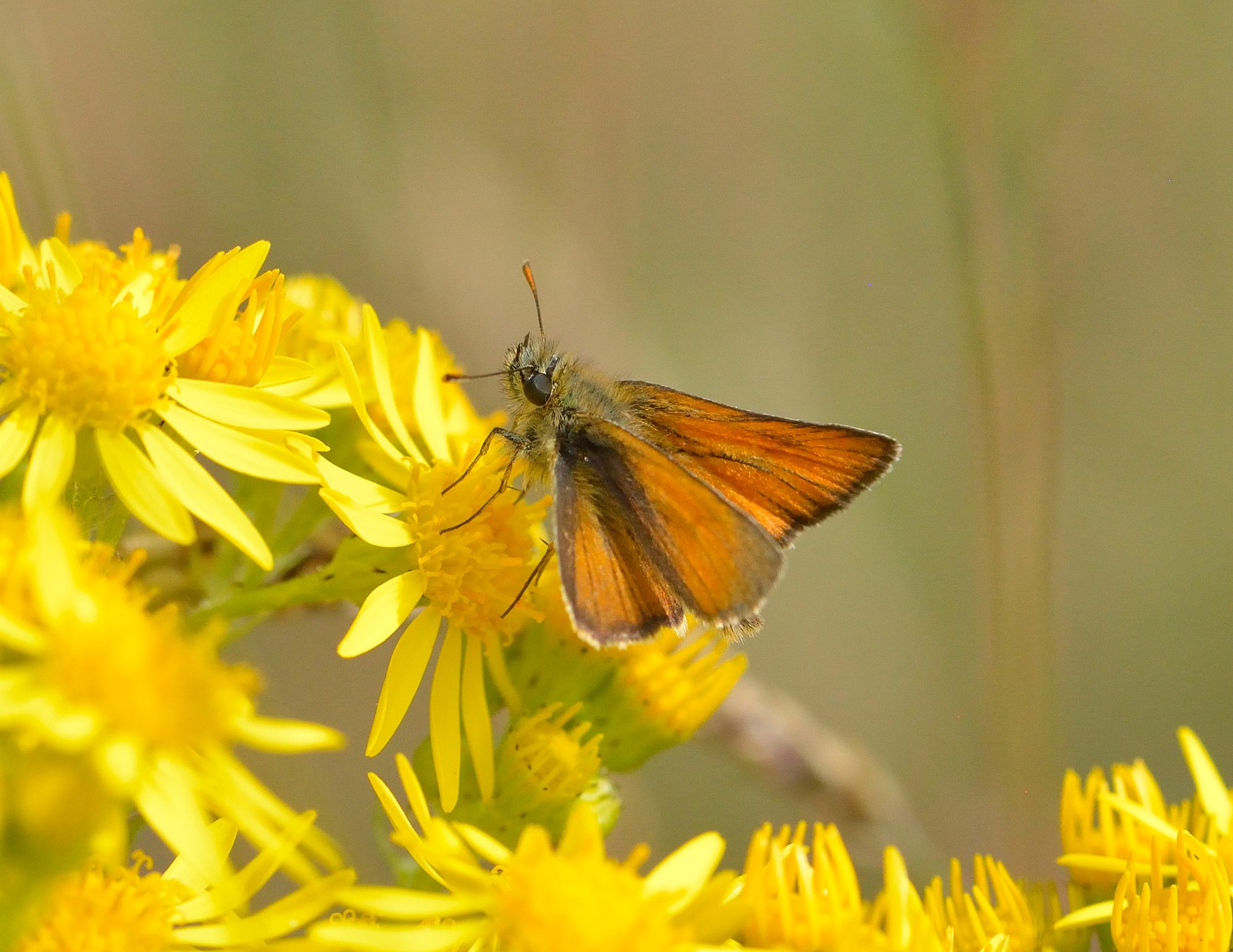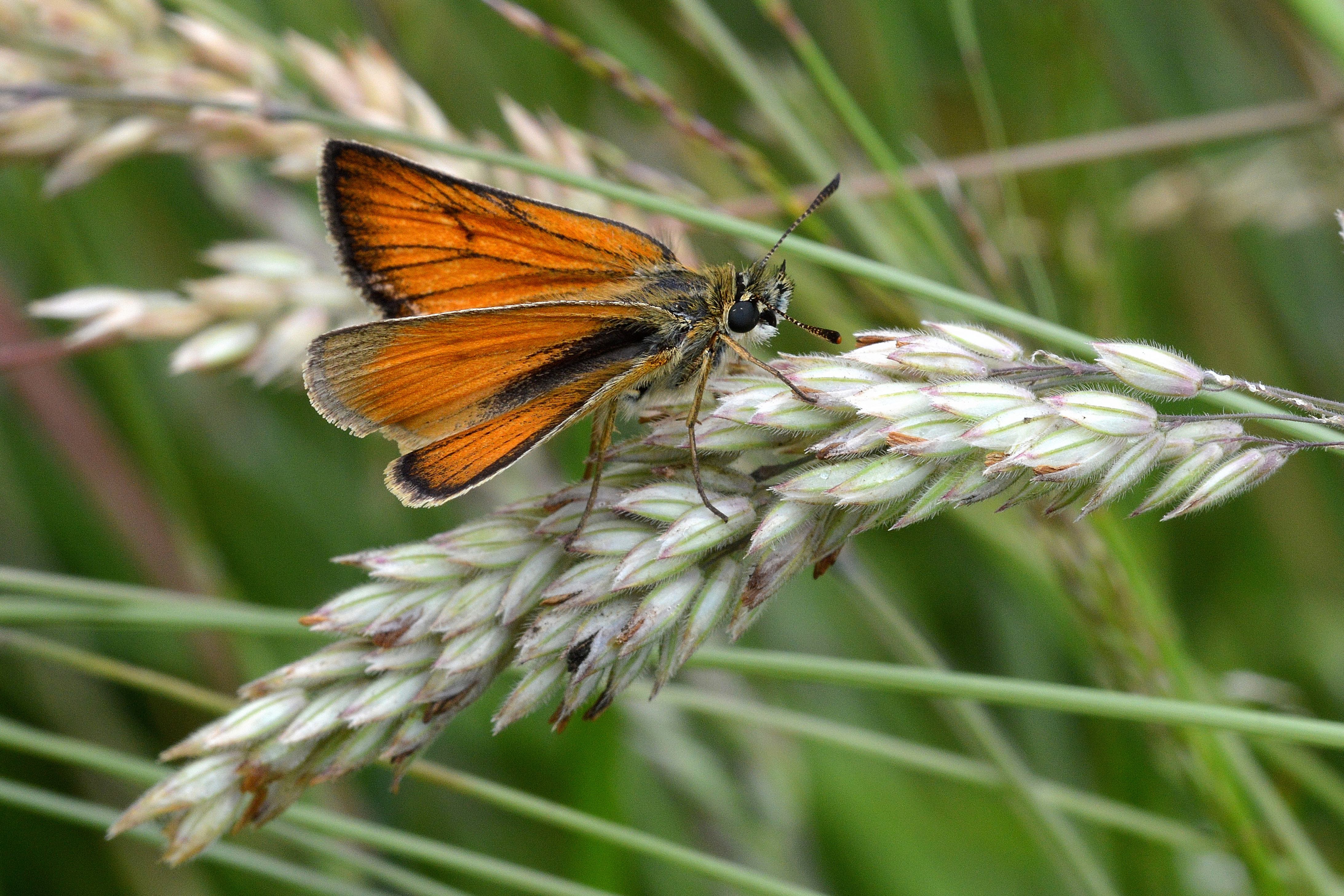In the summer of 2007, remarkably, two new species of butterfly for the county were recorded southwest of Lockerbie – Small Skipper and Essex Skipper. At the time the nearest known colonies were about 40 km (Hawick) and 220 km (Yorkshire) away, respectively. The most plausible theory is that one, or both species were brought in accidentally to the area.
In addition, the Small Skipper made its own way up through north west England, with colonies establishing quickly along the Solway. The Small Skipper now occupies large parts of the east of the county and is spreading rapidly.
Identification
Small and Essex Skippers are notoriously tricky to separate, especially when flying. To tell the two species apart one needs to examine the underside of the antennae. The undersides of the antennae of the Small Skipper are orange/brown while those of the Essex are a glossy black in fresh specimens, as though they have been dipped in black ink.
If comparing males, another way to tell them apart is that the sex brand of the Small Skipper is curved, but that of the Essex is shorter and straight, and runs parallel to the edge of the wing. Small Skippers can be readily distinguished from Large Skippers by their plain orange or golden fore and hind wings, whereas those of the latter are distinctly mottled.
Life cycle & flight period
One generation a year, the adults peaking between mid-July to mid-August. The eggs hatch soon after being laid and the caterpillars overwinter deep in the surrounding vegetation (unlike the Essex Skipper which overwinters as an egg).
Larval foodplant
Yorkshire-fog and other broad-leaved grasses.
Habitats
The Small Skipper is a butterfly of tall, unmown or ungrazed grassland and its characteristic habitats are roadside verges and field margins, although it also occurs in sunny woodland rides. Yorkshire-fog is favoured by females for egg-laying, and the butterfly is probably benefitting from the reduced cutting of verges.

